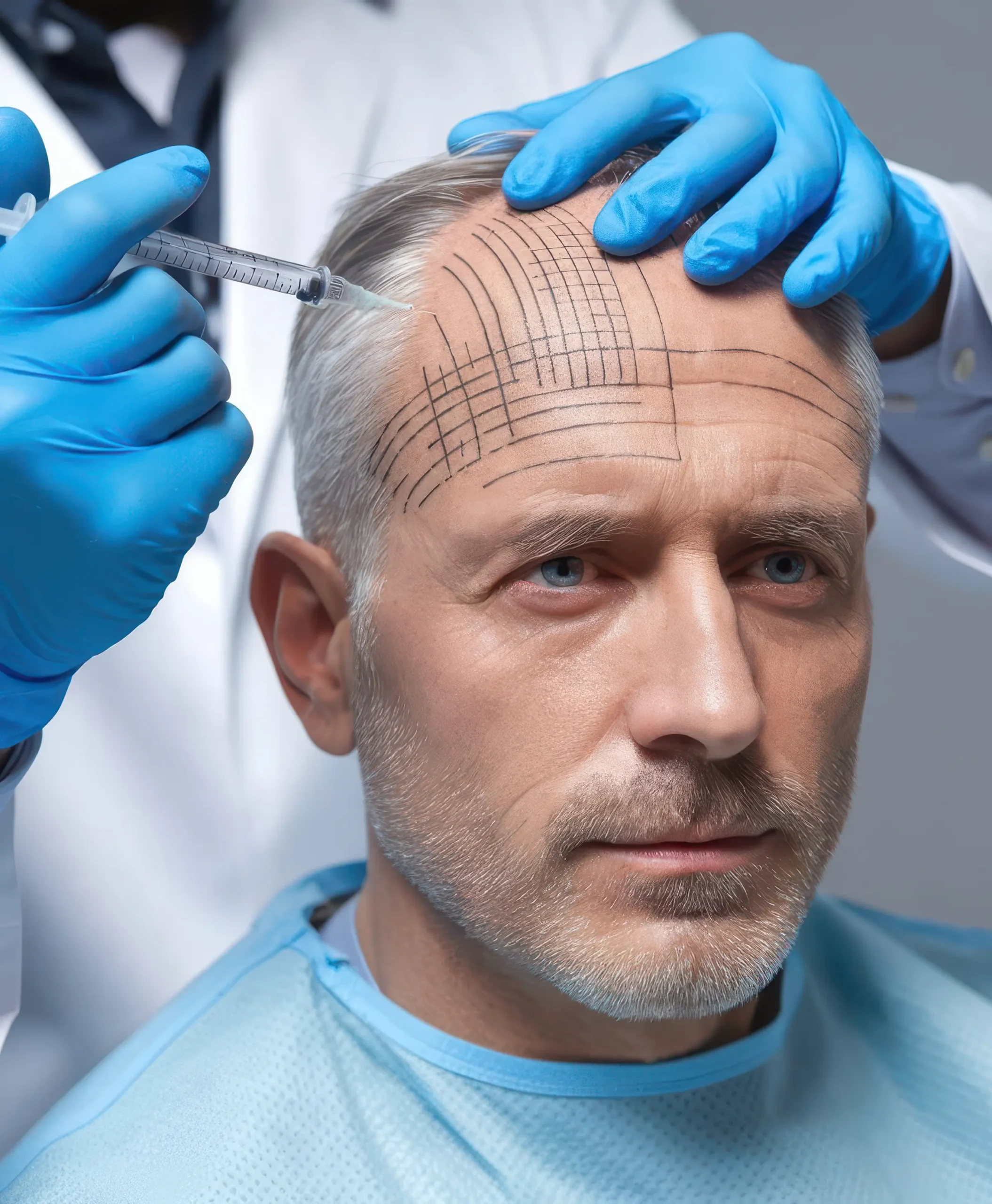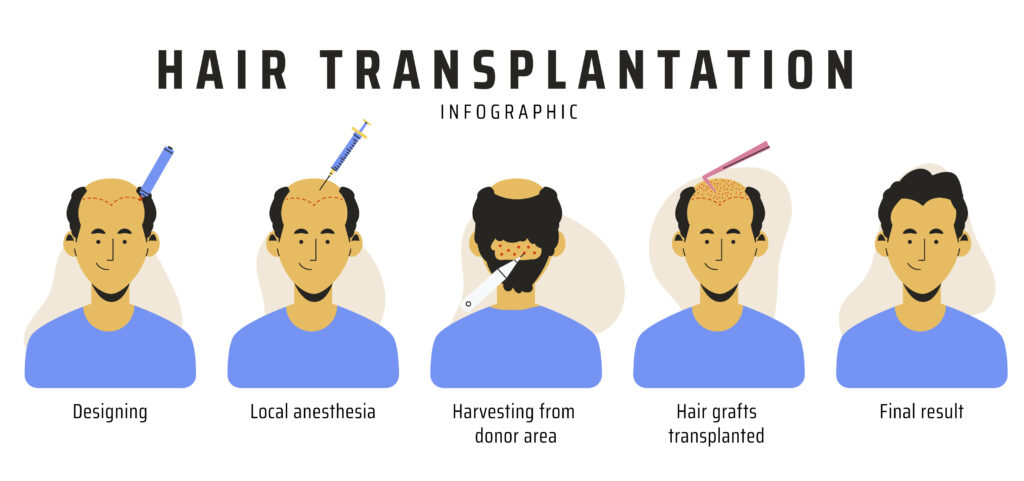How to Choose the Best Hair Transplant Clinic in UK

Hair loss is a common issue in the UK – about 6.5 million men and 8 million women are affected. Male-pattern baldness (androgenetic alopecia) hits roughly 85% of men by age 50. In fact, about 25% of men in their 20s already show early balding signs, and by age 35 around two-thirds of men have noticeable thinning. Women also experience hair thinning: one source cites roughly 8 million UK women (≈24%) with significant hair loss, and more than 50% of women report hair loss after menopause. These figures show that hair restoration is an issue for many age groups and both genders, underscoring the importance of choosing a qualified clinic.
Hair Transplant Costs in UK Cities
Hair transplant pricing in the UK varies widely by clinic and location. On average, UK clinics quote around £4,820 for a transplant (Norwood stage 2–3). Costs depend on the number of grafts needed and clinic reputation. In London, where demand and operating costs are high, a typical transplant might cost £4,500–7,000. In Manchester and similar northern cities, the average is lower, roughly £3,000–5,500. Smaller or regional cities (e.g. Liverpool, Nottingham) tend to be even more affordable (often around £2,000–£3,500).
- Example costs: A 1,500‑graft FUE procedure might cost ~£4.8k nationwide; some clinics start as low as £3,000 for minor cases.
- Cost drivers: Graft count (4000+ graft cases cost more), surgeon expertise, and technology (robotic/DHI methods can add premium) all affect price.
- City premiums: Central London (especially Harley Street) commands the highest prices, while clinics outside major cities often offer lower rates for comparable work.
Cutting-Edge Techniques: Robotic FUE, DHI, and Others
Beyond traditional FUE/FUT, many UK clinics offer advanced techniques. Robotic-assisted FUE (using devices like ARTAS or similar systems) and Direct Hair Implantation (DHI) have gained popularity. DHI uses a Choi implant pen to place grafts more precisely. For instance, one UK clinic reports using a “robotic DHI” platform that can transplant over 5,000 grafts in a single session, far more than typical manual sessions. These innovations aim for higher efficiency and graft density, especially in large cases.
That said, manual FUE remains the workhorse: it accounts for the majority of surgeries (globally ~65% of procedures are FUE). Clinics often promote robotic FUE or DHI as options for finer control or quicker procedures, but patients should understand that these methods still require expert surgeons. When choosing a clinic, ask if they use newer technologies (robotic FUE, Sapphire/advanced FUE punches, DHI) and what their track record is with those methods.
Certifications and Accreditations






One of the most important checks for a clinic is whether it meets UK regulatory and professional standards. Surgeon credentials: Any doctor performing hair transplants in the UK must be registered with the General Medical Council (GMC). Patients should verify the surgeon’s GMC number. It’s also wise to look for membership in specialist bodies: the International Society of Hair Restoration Surgery (ISHRS) and the British Association of Hair Restoration Surgery (BAHRS) have stringent entry criteria and promote best practices. Membership signals that the surgeon keeps up with training and ethics in hair restoration.
For peace of mind, always choose a reputable hair transplant clinic in the UK that follows these professional standards and employs certified, experienced surgeons.
Clinic oversight: By law, clinics that perform surgery in England must be registered with the Care Quality Commission (CQC) (Scotland/N. Ireland have equivalent regulators). CQC registration means the facility is regularly inspected for hygiene and patient safety. Patients should confirm their clinic’s CQC status (in England) or HIS/HIW in devolved nations. Key accreditations to look for include:
- GMC registration for all doctors on staff.
- CQC registration for the clinic (surgical license).
- Membership of ISHRS/BAHRS or the newly formed Joint Council for Cosmetic Practitioners (JCCP) (hair restoration register) for evidence of professional standards.
- Any formal awards or ratings (e.g. WhatClinic, RealSelf, 5-star reviews may indicate patient satisfaction but should be interpreted cautiously).
Industry Growth Trends
Hair restoration is a rapidly growing industry in the UK and worldwide. Rising demand has pushed up procedure volumes and market value. For example, international surveys report global hair transplant surgeries up 10% since 2016. In Europe, the number of hair restoration procedures soared (over 240% increase between 2010 and 2021).
In the UK market specifically, analysts predict a boom. Recent data show UK revenue at about £101 million in 2023, with forecasts to reach £335 million by 2030. This expansion (driven by social media, celebrity influence, and mainstream acceptance) means more clinics are opening and more surgeons are entering the field. While this gives patients more choices, it also means careful vetting is needed to avoid under-qualified operators.
Other trends to note: the majority of current patients are men (≈87% globally), usually in their 30s–40s, but a growing percentage of treatments are for women (British sources note up to 50% of inquiries now come from female patients). Non-surgical boosters (like PRP, micropigmentation) are also on the rise, but the core surgical market remains strong.

Safety and Hygiene Standards
Patient safety in hair transplant clinics is paramount. Reputable UK clinics adhere to strict hygiene protocols and audit regimes. Under CQC rules, clinics must follow national infection-control policies (e.g. regular hand-wash audits, instrument sterilization, sharps handling). The British Association of Hair Restoration Surgery (BAHRS) helped develop CQC inspection guides specifically for hair clinics, ensuring inspectors know what to look for (e.g. clean operating rooms, consent forms, aftercare plans).
In practical terms, a well-run clinic will have very low complication rates. For example, surveys show post-op infection rates are typically under 1% in FUE procedures performed in UK clinics. Proper technique and sterile handling keep infections minimal. Clinics should use accredited surgical facilities (often sharing operating rooms with dermatology or plastic surgery) and have emergency protocols. Patients should feel comfortable asking about a clinic’s hygiene (e.g. “Do you have CQC certificates?” “How often do you audit staff hand-washing?”).
Checklist – Signs of a safe clinic:
- CQC registration (or equivalent).
- Surgeons with hospital privileges or practising in licensed operating theatres.
- Clear written aftercare instructions and ready access to post-op support.
- Published data on outcomes (survival/success rates, complication rates) – many top clinics will share such information.
Post-Operative Complications
Like any surgery, hair transplants carry some risks, but most are minor and temporary. Infection is rare (<1% incidence) if standards are followed. Clinics report infection rates under one percent in FUE when protocols are stric. Graft “failure” (where transplanted hairs don’t survive) occurs in only a small percentage of grafts – typically on the order of 2–10%. If a clinic quotes a much higher loss rate, it’s a red flag.
Other common issues are usually transient: “Shock loss” (temporary shedding of transplanted or nearby hairs) happens in many patients but hair typically regrows in months. Swelling of the forehead is common for a few days. Some numbness or tingling at the donor site can occur, but it generally resolves within a few weeks.
Specific to FUT, the donor-area scar is a permanent linear mark (hidden under hair if grown out) and can cause stiffness; its visibility is a key downside. FUT also has a slightly higher short-term infection risk and longer recovery than FUE. In contrast, FUE leaves tiny dot-scars (harder to see) but can risk overharvesting if not done carefully.
In summary, while complications like infection or excessive bleeding are extremely uncommon, patients should still follow all post-op instructions (e.g. avoiding certain medications, keeping the scalp clean) to minimize even minor risks.
Summary and Recommendations
Choosing the best clinic requires research. Look for GMC-registered surgeons with proven hair restoration experience, operating in CQC-accredited facilities. Ask about the clinic’s typical graft survival and satisfaction rates (good clinics often cite ~90–95% survival and survey-based satisfaction >90%). Compare quotes sensibly: prices that seem “too good to be true” (well below regional norms) may cut corners. Finally, trust your instincts: reviews, before/after galleries, and a comfortable initial consultation can help gauge whether a clinic is reputable.
Ultimately, a qualified clinic will back its treatment with clear data (success rates, costs, accreditation info) and take the time to inform you. By focusing on certified professionals and evidence-based facts as above, you’ll be on track to a safe and satisfying hair restoration experience.

